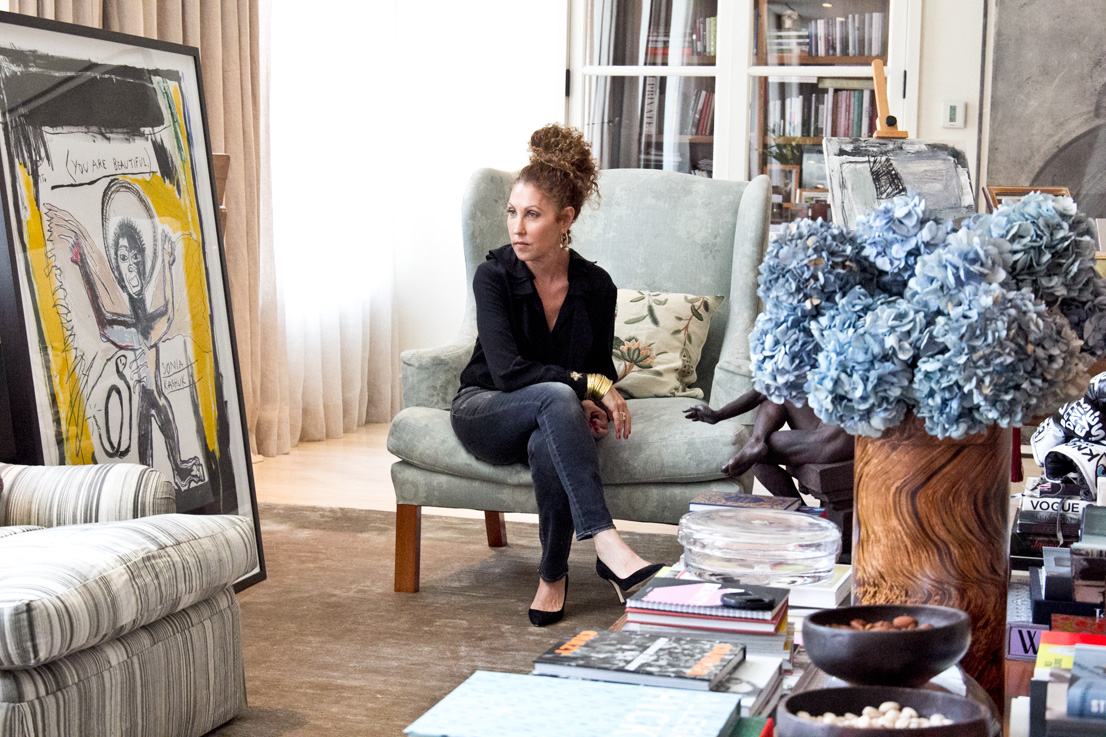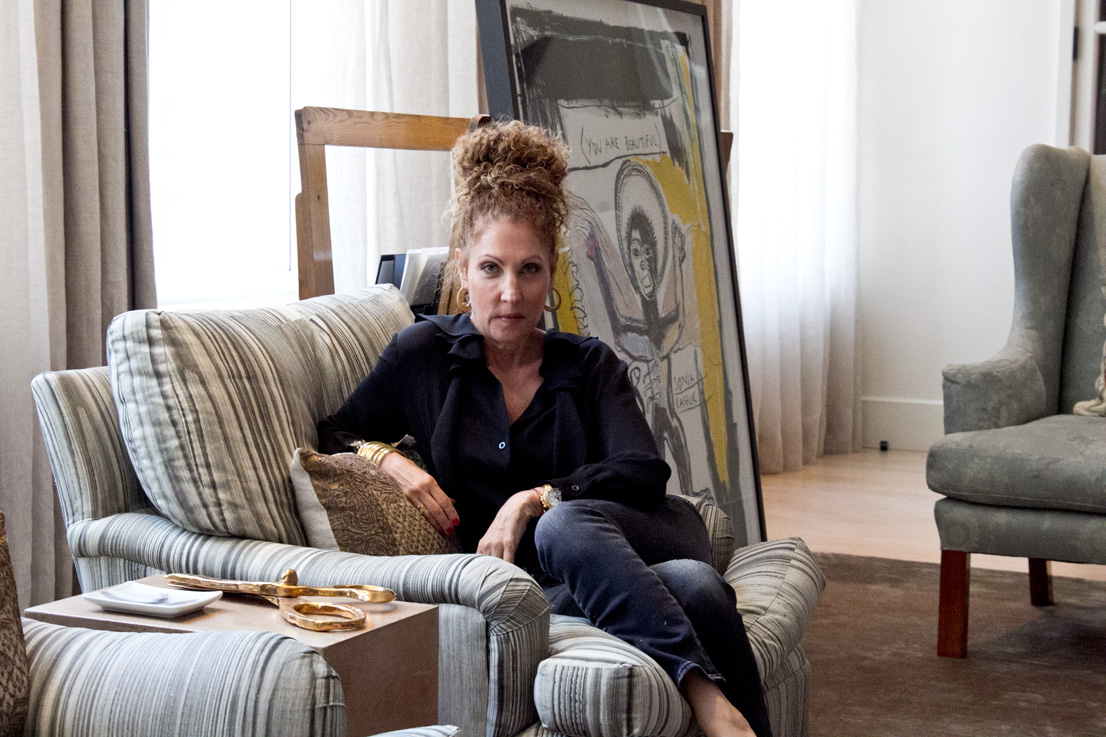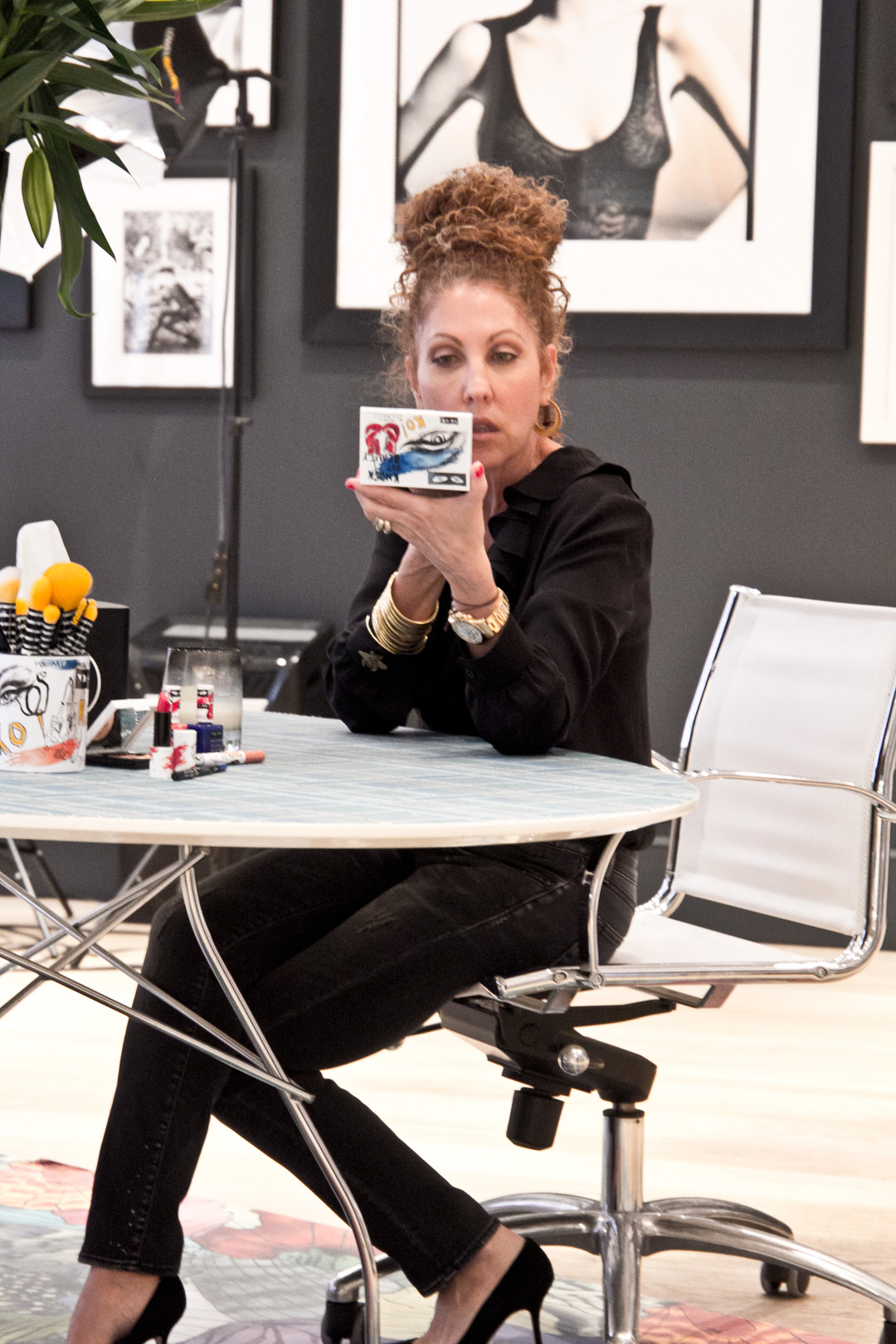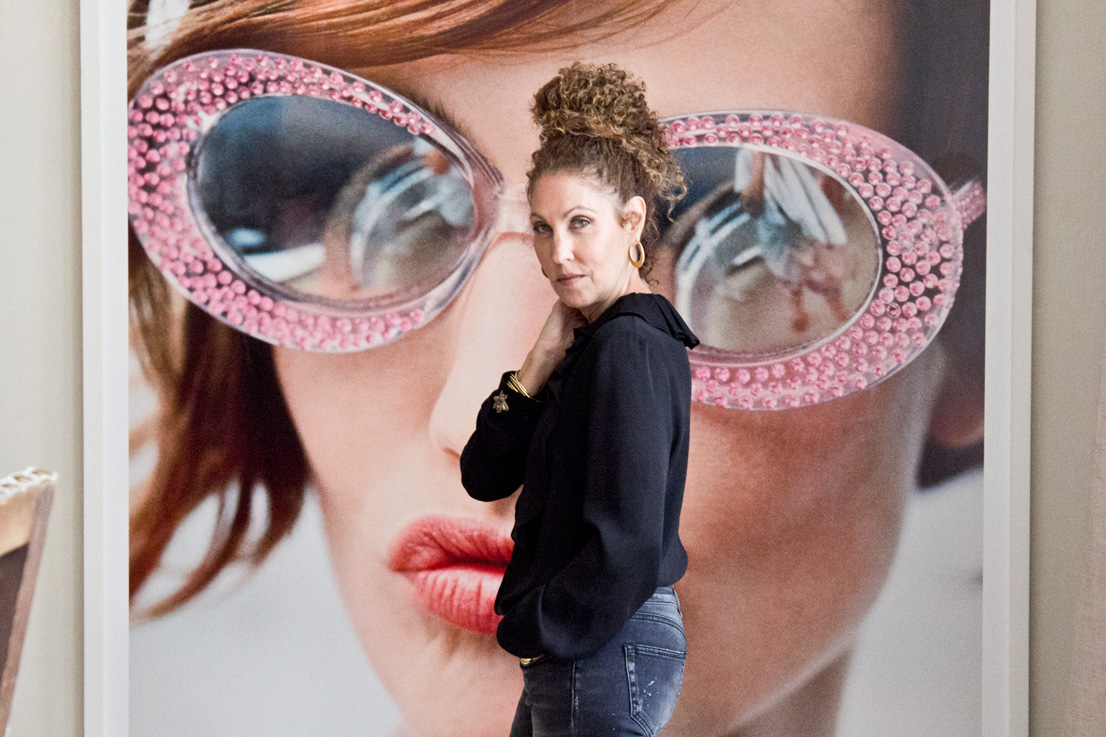It’s been more than 35 years since Sonia Kashuk started her career as a make-up artist. It was long before YouTube or retouching. In fact, then the camera saw everything and far from today’s world of create it now, see it instantly, she would have to wait months to see her work grace the pages of magazines like Vogue. To say she’s a big name in the world of beauty then, is an understatement. Her handiwork has appeared on the faces of Christy Turlington to Cindy Crawford and she counts the likes of photographer Arthur Elgort and Grace Coddington as long-time collaborators.
What makes Sonia so special though is what she’s created with her eponymous makeup line with Target. It kick-started eighteen years ago. Long before designer collaborations became a thing, she had the foresight to see that that was where the industry was headed. That aside, her decision to partner with the retailer was part of a bigger mission to make quality make-up available for the masses. While her peers like Bobbi Brown and Laura Mercier were launching brands in the prestige sector, she worked at helping to the bridge the gap between mass and luxury and has creating a lasting legacy in doing so.
This year is a particularly big one, as saw her announce her departure from her brand, leaving it under Target’s watch and while she’s keeping quiet about what her next move will be, we know that whatever she turns her hand to will disrupt the market in whichever field she explores. We feel honoured to have sat down with Kashuk to talk about how her start in make-up almost never happened, why the state of beauty right now is taking women back rather than pushing us forward and why balance is a fallacy when it comes to business and family.
ON FALLING INTO MAKE-UP BY ACCIDENT: I always loved colour, shape and form, whether that came through with the little business I had doing displays or designing clothes as a kid. I also had lots of friends who were hairdressers so I think those were all contributing factors but I didn’t specifically choose make-up at all. One day I was doing wardrobe on a video shoot and the make-up artist cancelled. I didn’t know what I was doing. The team just told me that I had to stand in because they had nobody else and that’s really how it all happened. It wasn’t planned. I was there, I lived in that world a bit but by no means had any clue about it. I wore a ton of make-up at the time (way too much in fact!) but had no conception beyond my own use of make-up so it did really drop into my lap. At the time I didn’t have a burning passion for beauty. It was always colour, shape and form that I loved and make-up just became an extension of that. Quickly I fell in love with the instant gratification of make-up. So much of the other things I was doing involved a long process but with beauty, you could see an immediate change. I have no patience so I loved the immediacy of it all.
ON THOSE SPECIAL MOMENTS: There are so many different moments over the course of my career that stand out for me. But I think it’s more about trips and experiences that stand out, as opposed to campaigns or specific editorials. There was a trip to Russia with Christy [Turlington], Arthur Elgort and Grace Coddington for US Vogue for example and safari trip with Christy for British Vogue too. Oh, and an amazing trip to Wyoming with Cindy [Crawford] for Italian Vogue. I love to travel so I think I relate to those big trips more. There’s been some great moments in studios but it’s always those special trips that are most memorable to me.
ON WHY SHE DECIDED TO LAUNCH A MASS LINE OVER GOING LUXE: I was a make-up artist buying make-up, constantly replenishing my kit and everything was so expensive. Brushes at the time were unattainable. A new blush brush, for example, was around $85. I had been working with Aveda doing consulting for them so I’d already spent a lot of time in labs and just had this moment of clarity. I knew that if I could partner with a big retailer, I could go straight from manufacturing to retail and cut so many levels of cost out and still bring incredible quality at a much more affordable price point. Target was the first retailer that came to mind. At the time I approached them, they were not in the designer collaborations space yet. They were only in the preliminary talks with Michael Graves, who was their first designer partnership. I signed my contract with them about six months after that. We both launched our businesses with Target in 1996. It wasn’t as though partnerships like that already existed and triggered my idea. I knew of their scale, I knew that they were an interesting business, and I knew people who’d worked with them so I thought it would be a great concept for them. Also, there was so much noise in the prestige sector with the emergence of all of these professional make-up artist driven brands so I guess timing played a big factor. Target loved the idea of affordability mixed with great design – all of the things that were so important for me was where they were already heading. I just happened to work through the door at the perfect moment for both of us.
THE BEAUTY SCENE BEFORE SHE LAUNCHED IN 1996: There was a huge discrepancy between mass and prestige. The one thing I would buy from the mass sector was mascara because brands like Maybelline have always had great mascara but aside from that, the quality was poor. Even use an eyeshadow from the mass brands was like trying to get colour from a stone. The packaging was throwaway; the quality was bad. It was frustrating for me because I couldn’t understand how these companies could get away with it. The one thing we never got across during all of my years working with Target was about the quality we were producing with my line. I think some people had an idea, which is what drove success for us, but I think if we articulated it at a bigger scale, it would have been an even bigger brand than it is. The difficulty is that I think quality is a hard thing to talk about and show. We definitely had this strong following who knew the difference in quality but in general, most people would walk into a Target store and just choose based on price. We were definitely not the highest, nor were we the lowest so if someone was making a choice purely on price, we were not the brand they’d go to but we far exceeded anyone in the market place on quality, 100 per cent.
ON PIONEERING ACCESSIBLE BEAUTY: When I launched with Target there was nobody in that space. What we did started to revolutionise the mass market make-up business because it made all of those brand stop and take a look. Hopefully I was the instigator, driving brands to relook at design, packaging and quality. It was so exciting because we were the first to bridge mass and prestige at a time where there was a huge difference between the two. What we did was ultimately blur that division and I loved that. That’s why the design was so important for me. Selling at a place like Target, all you have is the shelf so if the packaging isn’t eye-catching, people continue walking so presentation was incredibly important in order to be recognised as a point of difference. It was a real journey.
THE CREATIVE PROCESS: Sometimes it starts just because there’s a need in the market and sometimes it starts from a design perspective. For fall, one of the last pieces I designed was inspired by a table I saw when I was travelling in Udaipur in India. I started thinking about how I could apply that design to brush handles it evolved from there. The brand was always based around the fact that I’m trend-driven but not trendy. When super poppy, bright colours are a thing, we might do a little of that; but when I’m in a room, restaurant or airport, I’d always look at what people had on their faces. That was the make-up bag I wanted to produce. I wasn’t caught up in trying to be the uber trendy line – there was already a lot of those out there. I’ve always been a woman, designer, make-up artist and entrepreneur trying to create products for real women.
THE PRESSURE TO PRODUCE COUNTLESS COLLECTIONS & KEEP UP WITH THE NEW: Some things are valid and some things are purely a trend. If you are not on top of a trend timing-wise, it can backfire on you. For instance, I never did a BB cream. I was there testing the initial variations of them and they were like paste on a face. When you looked at how they made the skin look, it was not pretty so I refused to produce them. At the end of the day, I don’t care what the buzz is; it’s all about how products look on the skin and for me, BBs were a new name for tinted moisturisers. It went from BB to CC to DD. By the time it got to EE I’d had enough! Although it had noise for a while, I stayed with a classic tinted moisturiser that I knew had good performance. I think you do have to constantly think about evolving but there always has to be performance attached to innovation.
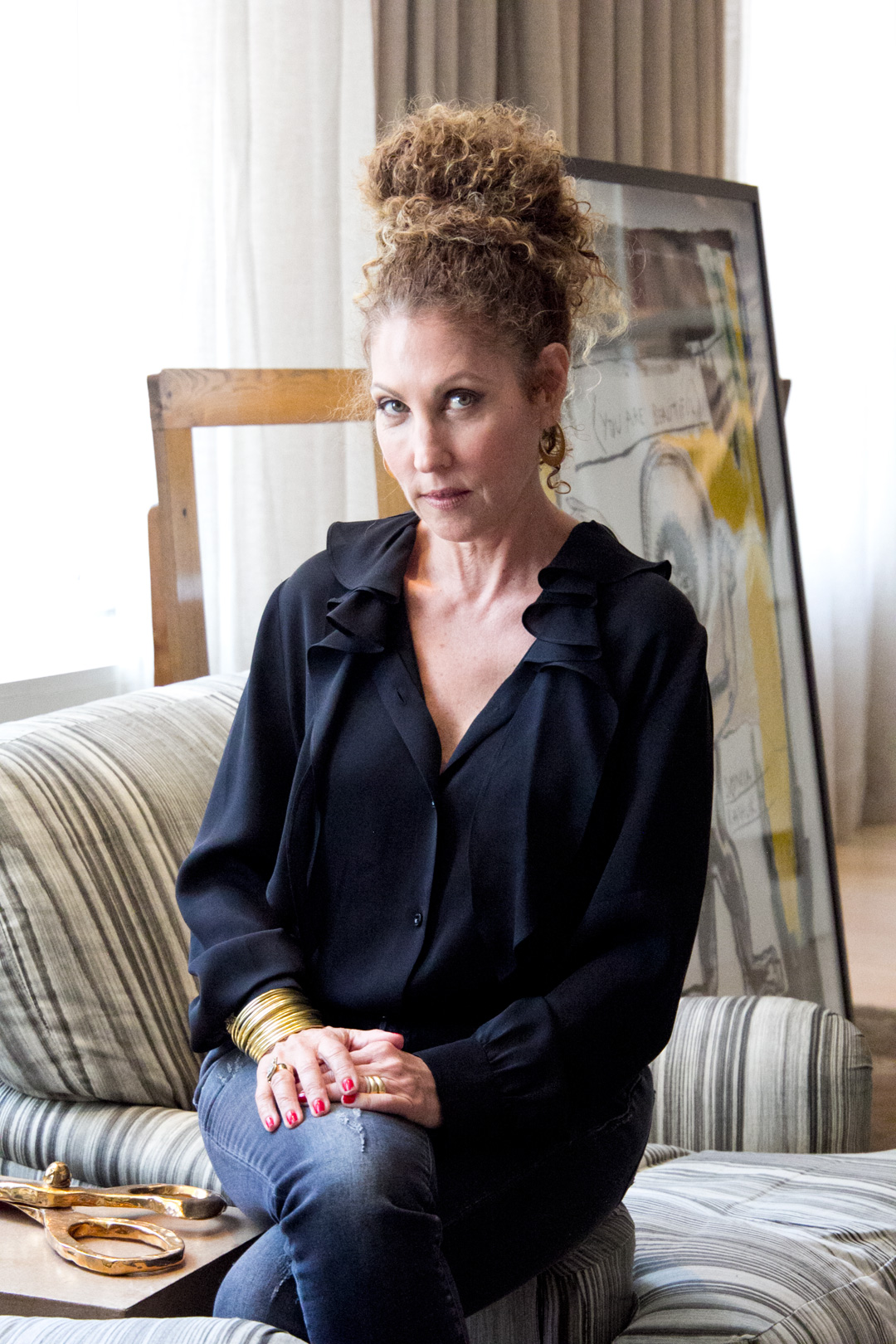 THE STATE OF THE BEAUTY WORLD NOW: I think there are great products out there that you can use like highlighters than make your glow and look beautiful but I don’t like the artificial look that everyone’s doing now. It makes people look crazy. You see people wearing highlighters and contours and it looks insane. It’s been good for the beauty industry because it’s sold a lot of products but for me as a mother and a woman, I don’t like it. I don’t want my 18-year-old daughter to look at these people restructuring their face with make-up; people who wouldn’t ever leave the house without a full face of make-up on. That’s not a good message for young women or women of any age. I’m all about embracing who you are. We all have imperfections. I have so many women come to me and say they have dark circles. I say, learn how to do a great smoky eye and own it. There’s way to create a positive out of what we perceive to be a negative. This whole make-up movement has taken women back twenty years rather than moving us forward. On one side of the spectrum there’s all the no-make-up make-up products and on the other there’s the contouring, strobing, lashes, you name it. It’s an interesting time but I want to move women forward, not backwards.
THE STATE OF THE BEAUTY WORLD NOW: I think there are great products out there that you can use like highlighters than make your glow and look beautiful but I don’t like the artificial look that everyone’s doing now. It makes people look crazy. You see people wearing highlighters and contours and it looks insane. It’s been good for the beauty industry because it’s sold a lot of products but for me as a mother and a woman, I don’t like it. I don’t want my 18-year-old daughter to look at these people restructuring their face with make-up; people who wouldn’t ever leave the house without a full face of make-up on. That’s not a good message for young women or women of any age. I’m all about embracing who you are. We all have imperfections. I have so many women come to me and say they have dark circles. I say, learn how to do a great smoky eye and own it. There’s way to create a positive out of what we perceive to be a negative. This whole make-up movement has taken women back twenty years rather than moving us forward. On one side of the spectrum there’s all the no-make-up make-up products and on the other there’s the contouring, strobing, lashes, you name it. It’s an interesting time but I want to move women forward, not backwards.
ON SOCIAL MEDIA: I always read the comments. My son Jonah, who currently works on our social media, always says, ‘mom, don’t read everything,’ because you’re always going to get both positive and negative. But when people say something negative, it’s so frustrating. They end up recommending other products that I know are nowhere near the quality-level of mine which drives me crazy but I guess it’s like with anything in life, you have to take it with a pinch of salt. There’s always going to be those people who just don’t have a good thing to say about anything and who would always rather be negative than say anything positive. But I guess that’s what comes with social – you’re going to get positive and negative. You just have to hope the positives outweigh the negatives. It’s not all bad though. I was in business for so many years without any type of social media and had absolutely no voice. In the past when you were working in a mass environment, you had no voice. You couldn’t give a personality to your brand other than trying to give it a personality through packaging but social media has enabled me to have a voice for the first time and be out there and be outspoken. So for me, the social uprising was so exciting because it was the first time I had a voice after many years in business.
ON DECIDING TO PART WAYS WITH HER BRAND: My partnership with Target was coming on almost 18 years, which is a really long time. There’s a lot of things that I’m proud of but one of the things is relevancy – to be able to run a brand and stay relevant for so many years was incredible. I feel like I’m more relevant today than when I launched in 1999. With that said, it was very exhausting coming up with four new collections a year. It doesn’t matter what we’ve done in our lives, people always focus on what we’re doing next. Even today, I feel that pressure because people are slowly finding out that I’m leaving the brand and asking, what’s next but I really don’t know. I don’t know what triggered it for me, but it just became so clear that it was time to step away. I had built and delivered a great brand but it was just getting harder and harder to be an entrepreneur in such a big environment. It just became exhausting and very difficult playing in that huge sandbox. I had done what I felt I could do so was ready for Target to go forward and do with it what they saw fit. I’m not sure what that is going to be – Target will be running that and we won’t be part of it – but we have the fall, holiday and spring collections coming up which are signature Sonia so I’m really excited about that. I don’t know what the future of the brand holds but I hope they continue to focus on quality because to me, that was what created the brand and kept us in business. In life, everything is about timing and recognising when it’s time to move on. I was the longest standing make-up artist partnership. So many of my peers with beauty brands sold four, five, six years after launching so I really stuck in for a really long time. I’m getting older and there are lots of other things I want to do with my life. I want to have the opportunity to start thinking about other things and embrace the exciting process of starting something else.
HOW INSTINCT HAS PLAYED A ROLE IN HER CAREER: I am totally guttural. I don’t think I’ve ever done a focus group in my life. I’m solely driven by instinct. I’ve always had this very clear (and lucky!) vision for trends and insights. I don’t where it comes from but it’s definitely innate. It’s what’s guided my journey – that process of thinking ahead, having a vision, and having the courage to go with it and not waiver. Sometimes things happen and you can so easily get caught up in the moment and think you should go a different route to the course you’re on when that’s probably the worst things you can do. Having a clear identity as a person and as a brand is one of the most important things you could ever do. Establish who you are and what you stand for and stick with it.
THE MYTH OF BALANCE: It’s total bullshit if someone says they have balance. Maybe I’m just not that smart but for me, it’s impossible. My daughter just graduated high school and my son just graduated college and I wrote a note to the both of them saying that I might not have been the best mother but I tried to be the be the best mother I could, and that part of making me happy was working. I wasn’t always at that concert or that event because of having to travel for work, but we all try to do the best we can and hope that the work that fulfils us and gives us an identity doesn’t negatively impact on our families. As I got older I was able to control my life a little more than I could early on in my career as a make-up artist. If a photographer or magazine called asking me to be on a shoot, I would have had to say yes. I didn’t have the flexibility to be able to turn down a job. As I built my brand I slowly had more control over my schedule but at the same time, I often had to commit to be places far in advance. When people are expecting you at the same time that a school concert pops up at the kids’ school, it’s hard. I could never be with my family for those moments. Between my husband and I, we tried to balance out as best we could. And it all worked out because my kids are extraordinary but it was really hectic at times. The stress levels could be overwhelming and daunting but we were blessed and lucky to have a helper, Anita, in our home whose been with us for seventeen years. So we definitely relied on the fact that there was another adult to help and were very lucky to have that. Could I have done that on my own? I’m not sure. Even with help and a husband I’m sure there’s a lot of things I could have done better if I wasn’t quite so stressed out but you do the best you could do. Maybe me being fulfilled made them happier because they had a happier mom.

